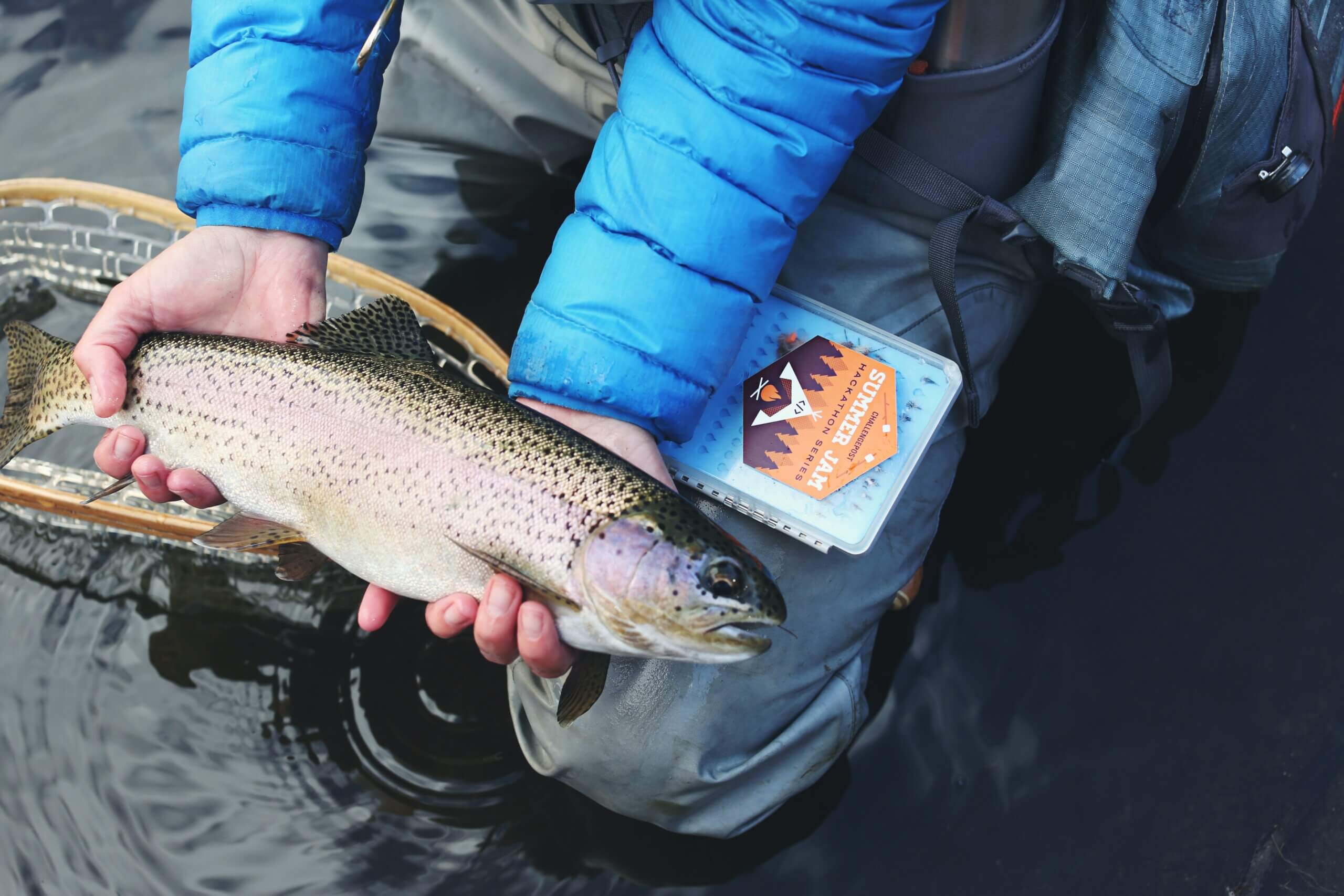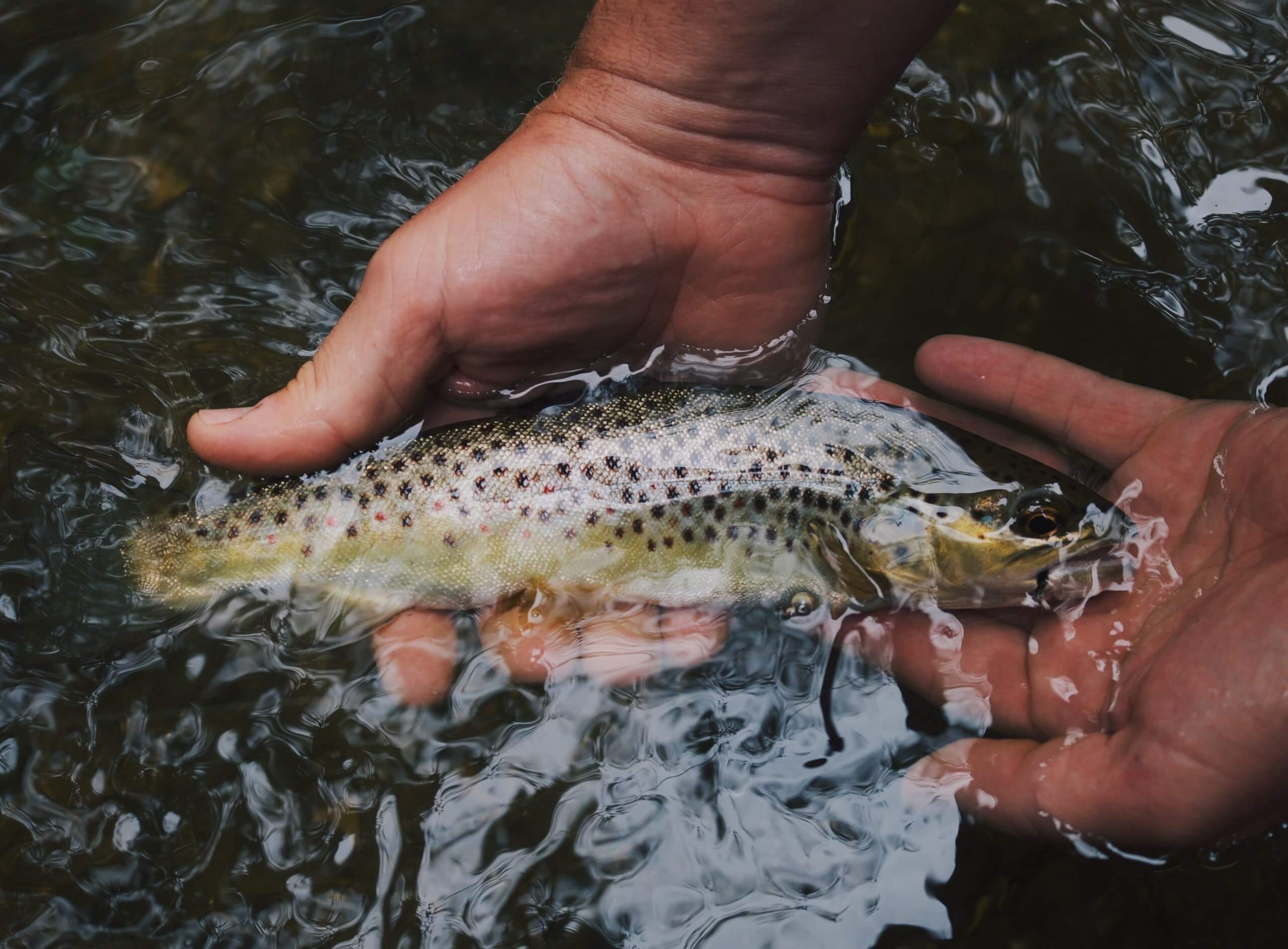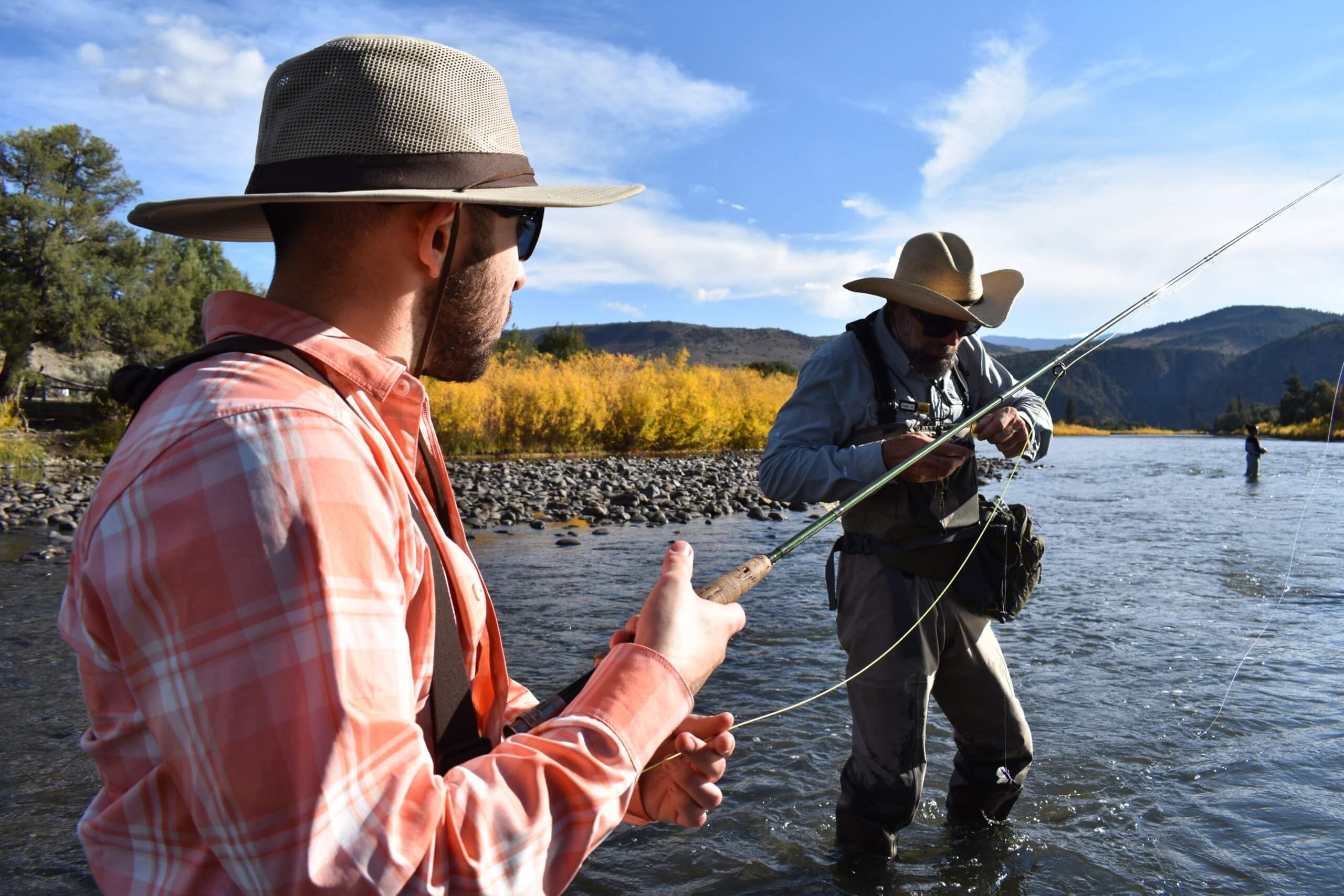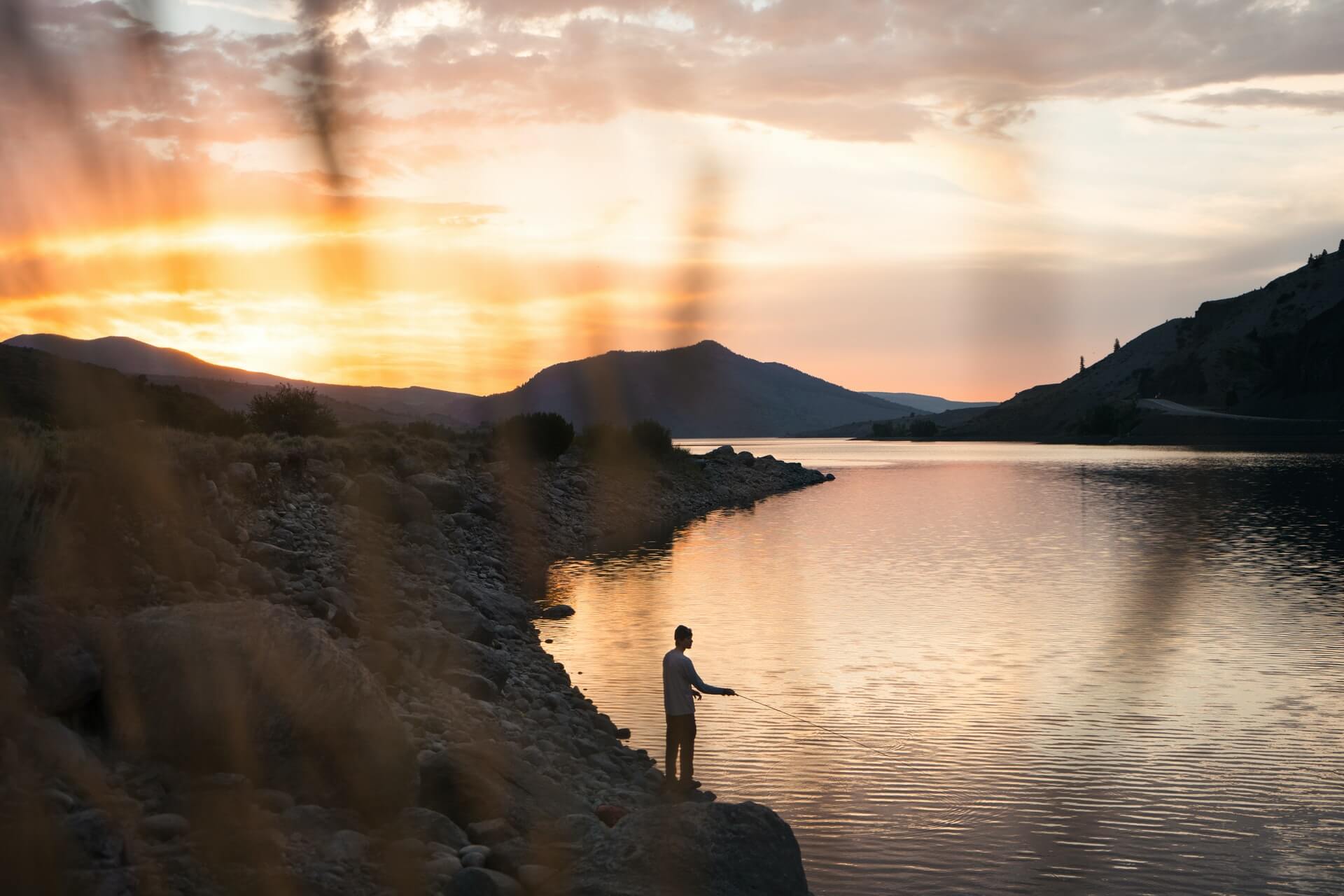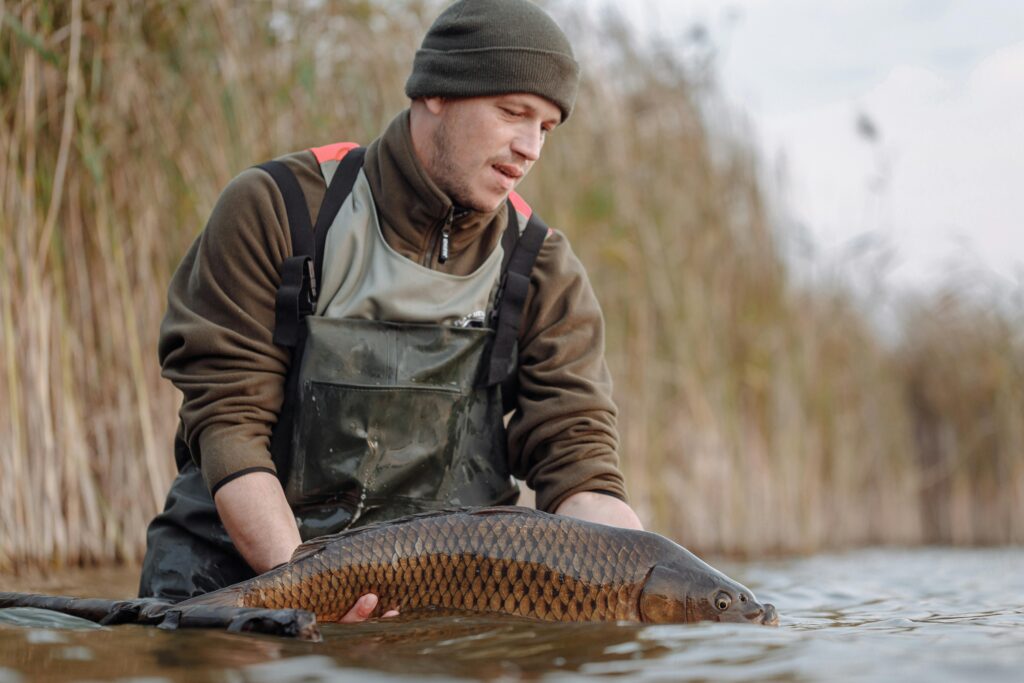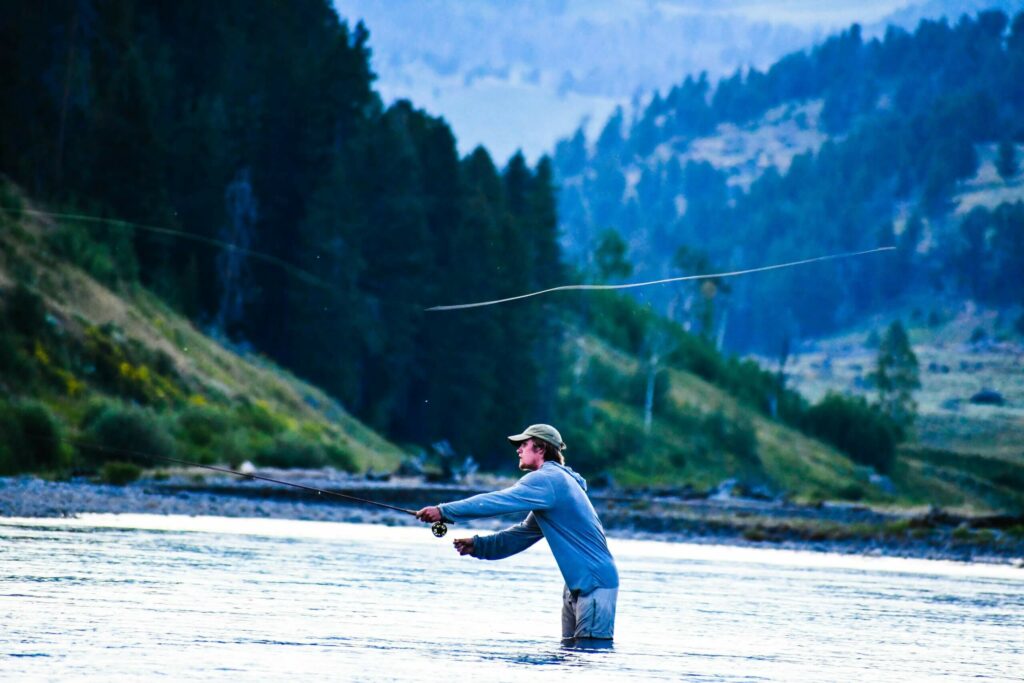Colorado, with its pristine rivers and majestic landscapes, is a haven for fly fishing enthusiasts. From the spirited rainbow trout to the elusive cutthroat, Colorado’s shimmering waters teem with life.

As we embark on fly fishing trips across this beautiful state, it becomes our responsibility to ensure these waters remain a thriving ecosystem for generations to come. For this reason as well as others, it is essential that anglers practice catch and release when venturing into Colorado’s rivers. We’ll delve into the importance of catch and release and offer region-specific tips on how to practice it effectively.
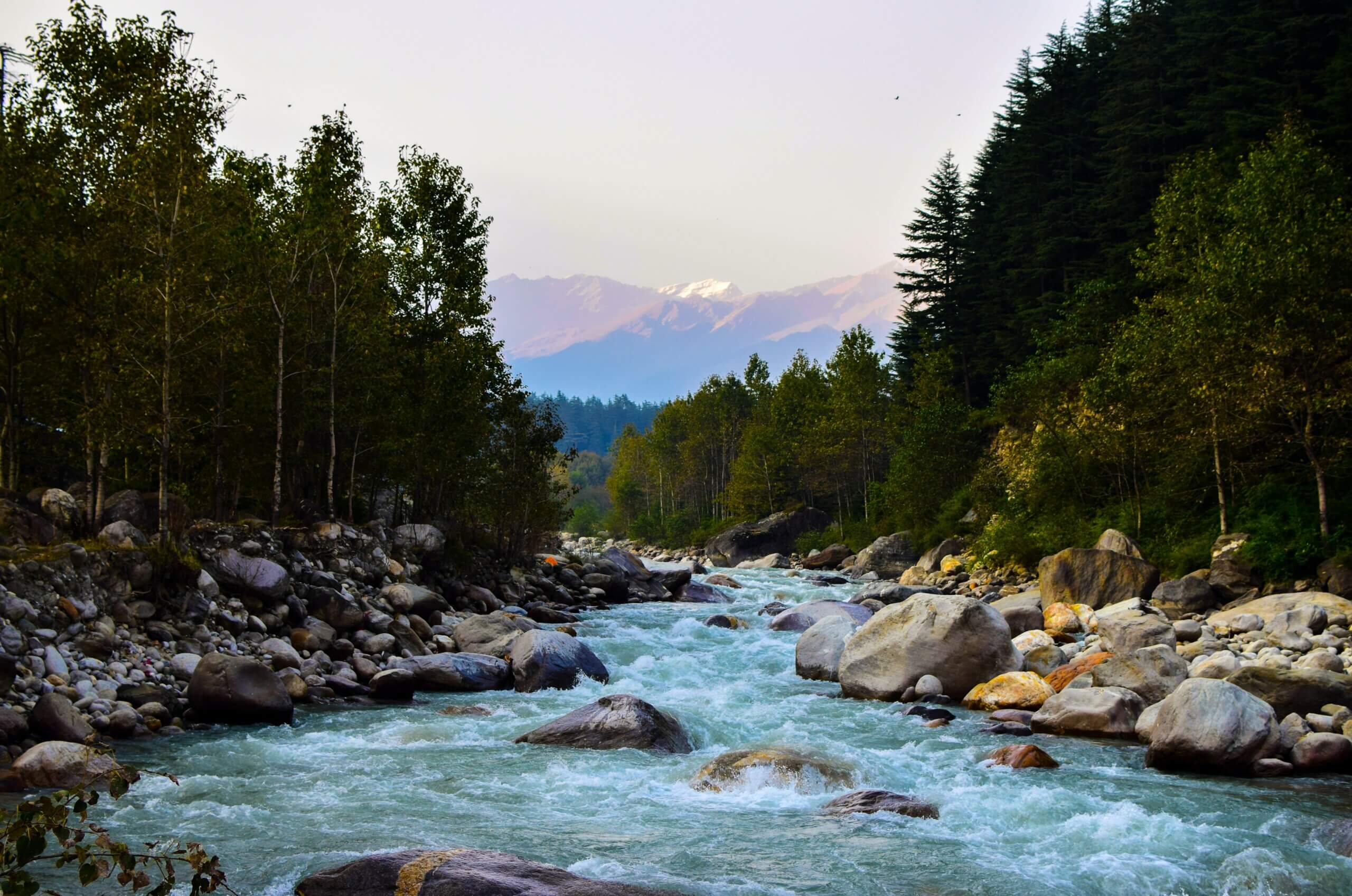
The Vital Role of Catch and Release in Colorado
Colorado’s rivers are not just a scenic backdrop for fly fishing; they are lifelines for countless aquatic species. Here’s why catch and release plays a crucial role:
Sustaining Quality Fisheries:
Colorado boasts some of the finest fly fishing destinations in the world. Catch and release ensures that these rivers maintain their high quality. By releasing fish, particularly young ones, anglers allow them to grow and reproduce, contributing to the overall health of the fishery.
Preserving Unique Ecosystems:
Colorado’s rivers and their surrounding ecosystems are delicate and interconnected. Catch and release helps maintain the balance of these ecosystems by reducing the stress on fish populations and preventing overfishing. It also helps maintain the fishing limits set in Colorado; these limits are set for a reason, ensuring species are not overfished and levels are maintained.
Responsible Angling Ethics:
Catch and release embodies the principles of responsible angling. It emphasizes the enjoyment of the sport, the respect for fish, and the protection of their habitat. It encourages anglers to take only memories and practice leave no trace principles.
Effective Catch and Release Practices in Colorado
Now that we understand the importance of catch and release in Colorado, let’s explore how to practice it effectively Check out this video for how to properly practice trout catch and release.
Know the Regulations:
Before you hit the waters, familiarize yourself with Colorado’s fishing regulations, These regulations include catch limits, size restrictions, fishing license information, and specific catch and release areas. Complying with these rules is essential for preserving fish populations.
Use the Right Gear:
Invest in gear designed for catch and release. This includes barbless hooks, which are easier to remove from a fish’s mouth, reducing the risk of injury during release. Opt for a landing net with a rubberized mesh to minimize damage to a fish’s scales and slime layer.
Handle Fish with Care:
Handle fish gently and with wet hands or gloves to avoid removing their protective slime coat. This coat helps fend off infections. Avoid squeezing the fish tightly or touching their gills, as these areas are particularly delicate.
Minimize Air Exposure:
Keep the fish in the water as much as possible. If you need to remove the fish for a quick photo, do so for the shortest time possible. Prolonged exposure to air can stress the fish and reduce its chances of survival after release.
Use Pliers or Forceps:
If you must remove the hook, use a pair of forceps or long-nose pliers to carefully extract it while the fish is still in the water. This reduces handling time and stress for the fish.
Revive Exhausted Fish:
After a tough fight, fish can become exhausted. Hold the fish gently in the water, allowing it to regain its strength. Release it when it can maintain an upright position and swim away on its own.
Practice Ethical Photography:
If you wish to capture the moment with a photo, be mindful of the fish’s well-being. Keep the fish close to the water’s surface and avoid excessive handling. Consider using underwater cameras or capture the beauty of the fish in its natural element.
Pay attention to the temperature:
If water temperatures are higher than 65 degrees Fahrenheit, more oxygen from the water will dissolve into the air. These conditions already make it more difficult for fish to breathe. For this reason, it is important to assess the water temperature and fish when rivers and lakes are at their coolest.
Conservation Efforts in Colorado
Colorado’s dedication to conservation is evident through various organizations and initiatives. Consider supporting these efforts to help protect the state’s pristine waters, or read more about ethical fishing, fly- fishing conservation, and fly-fishing best practices.
Colorado Trout Unlimited: Colorado Trout Unlimited is a leading organization dedicated to conserving and protecting Colorado’s cold-water fisheries and their watersheds. They actively engage in habitat restoration and conservation projects.
Colorado Parks and Wildlife: Colorado Parks and Wildlife plays a pivotal role in managing the state’s fisheries and enforcing fishing regulations. Their website provides valuable information on regulations and conservation efforts.
Colorado’s rivers are more than just waterways; they are the lifeblood of its natural beauty and biodiversity. As fly anglers fortunate enough to cast our lines in these pristine waters, we bear the responsibility of preserving them. By adhering to catch and release practices, respecting fishing regulations, and supporting local conservation efforts, we can be stewards of these precious resources.
Let’s cherish our time on the rivers of Colorado, savoring every catch, and releasing each fish back to its home, so that these waters may continue to thrive for years to come, as we safeguard the future of Colorado fly fishing and keep its waters teeming with life and adventure.

